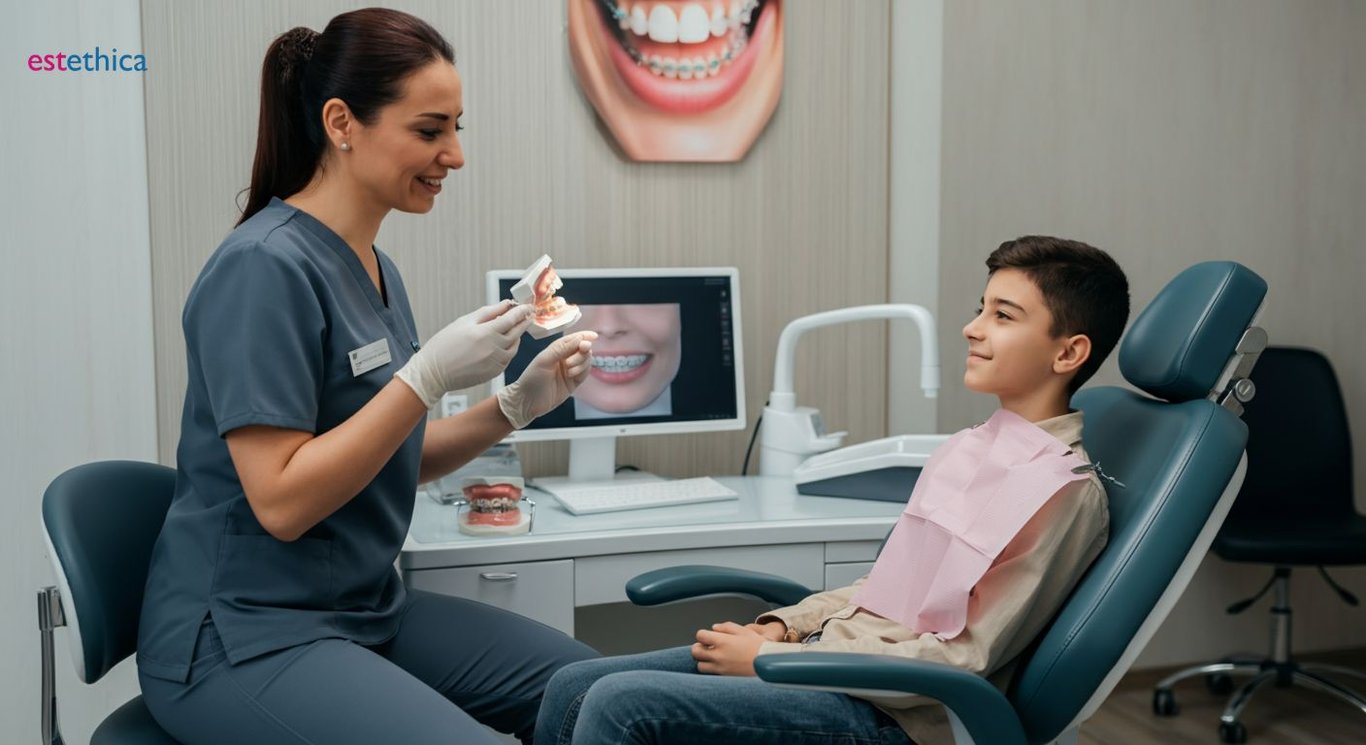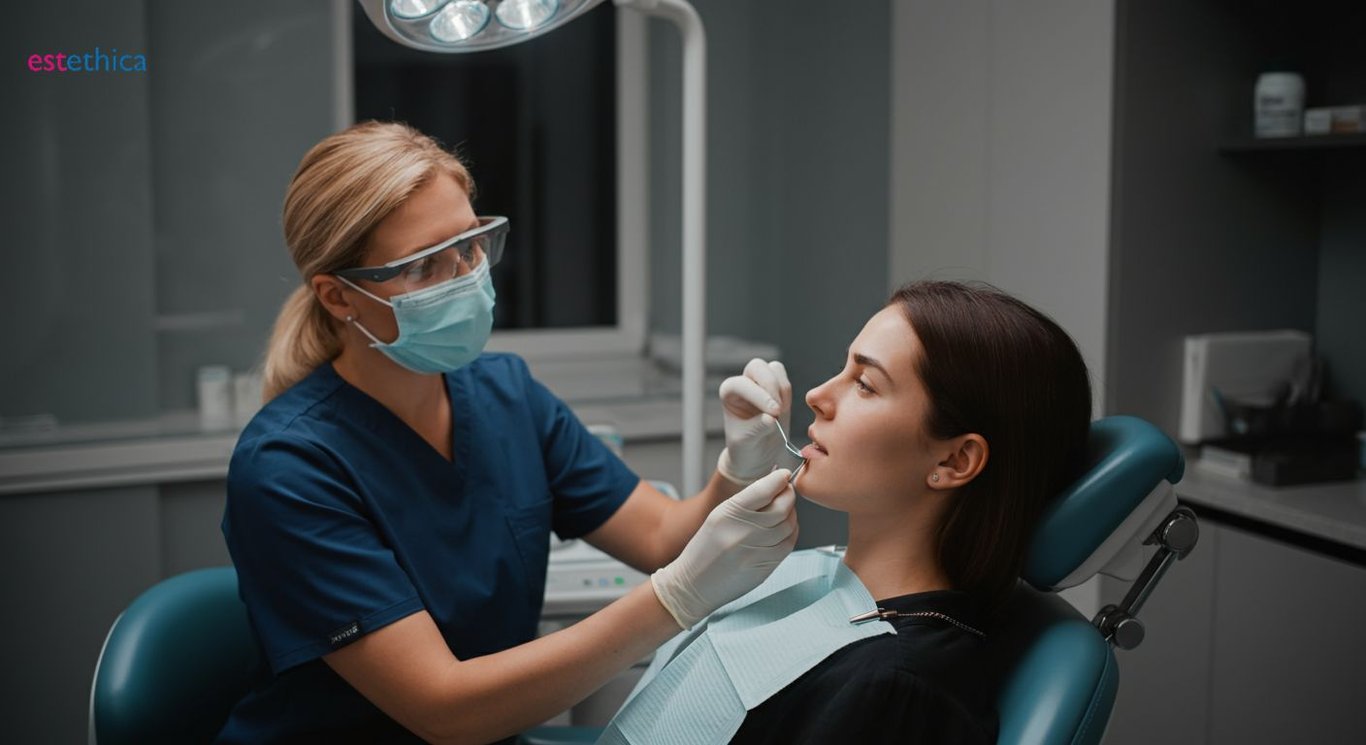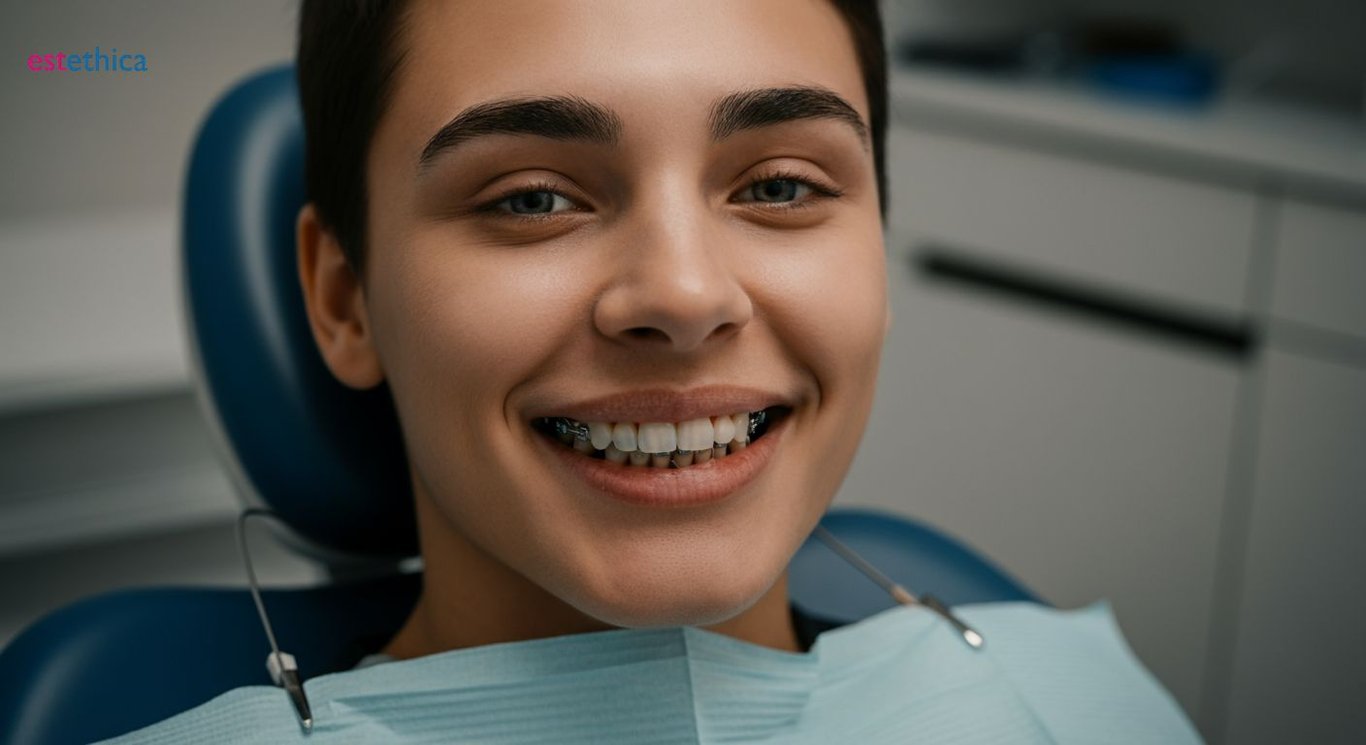Unlocking the Secrets of Orthodontics: How Braces Transform Smiles
Explore the transformative power of orthodontics, from traditional braces to innovative clear aligners.
Orthodontics holds the potential to dramatically transform smiles and boost confidence. As a critical branch of dentistry, it addresses alignment issues with cutting-edge techniques. This blog post delves into the fascinating world of orthodontics, explores the mechanics behind braces, and helps you choose the right treatment for your needs.
Understanding the Basics: What is Orthodontics?
Exploring the Role of Orthodontics in Dental Health
Orthodontics is a vital branch of dentistry that addresses dental and facial irregularities. By utilizing devices such as braces and clear aligners, orthodontists aim to enhance both the functionality and aesthetics of a patient's smile. This specialized field not only focuses on teeth straightening but also on correcting jaw alignment issues, which can significantly impact oral health.
Key Benefits of Orthodontic Treatment
- Improved bite function, reducing the risk of tooth wear and jaw discomfort.
- Enhanced facial symmetry, contributing to overall appearance and confidence.
- Prevention of future dental issues by aligning teeth properly.
Orthodontic treatments are tailored to individual needs, ensuring that each patient receives the most effective care. For instance, a teenager might benefit from traditional braces, while an adult may prefer the discretion of clear aligners.
Steps in Orthodontic Treatment
- Initial consultation to assess dental issues and discuss treatment options.
- Customized treatment plan development, including device selection.
- Regular adjustments and monitoring to ensure optimal progress.
Orthodontic treatment is a collaborative process between the orthodontist and the patient, requiring commitment to achieve the desired results. Regular check-ups and adjustments are crucial to the success of the treatment, ensuring that the devices are functioning correctly and that the teeth are moving as planned.

The Science Behind Braces: How Do They Work?
Understanding the Mechanics of Braces
Braces are a sophisticated orthodontic tool designed to apply continuous pressure on teeth, gradually moving them into the desired position. This process involves a combination of bands, wires, and brackets that work together to realign teeth and correct jaw alignment. The initial evaluation by an orthodontist determines the specific needs of each patient, allowing for a customized approach to treatment.
Components and Their Functions
- Brackets: These small squares are bonded directly to the front of each tooth, serving as anchors for the braces.
- Archwires: These thin metal wires connect the brackets and guide the movement of teeth.
- Elastic Bands: These apply additional pressure to aid in the alignment process.
Each component plays a crucial role in the effectiveness of braces, ensuring that teeth move in a controlled and precise manner. The combination of these elements allows for the gradual adjustment of teeth and jaw, leading to improved dental health and aesthetics.
The Process of Teeth Movement
- Initial Placement: Braces are carefully applied to the teeth, setting the foundation for movement.
- Regular Adjustments: Periodic visits to the orthodontist ensure that the braces are tightened and adjusted as needed.
- Final Alignment: Once the desired position is achieved, braces are removed, revealing a straighter smile.
Throughout the treatment, the orthodontist monitors progress and makes necessary adjustments to ensure optimal results. This meticulous process not only straightens teeth but also enhances overall oral health by correcting bite issues and preventing future dental problems.

Choosing the Right Treatment: Braces vs. Clear Aligners
Comparing Effectiveness and Suitability
When deciding between braces and clear aligners, understanding their effectiveness and suitability is crucial. Braces are typically recommended for complex orthodontic issues, such as significant misalignments or bite corrections. They provide consistent pressure, which is essential for intricate adjustments. For example, a patient with severe crowding might benefit more from braces due to their robust corrective capabilities.
On the other hand, clear aligners are ideal for less severe cases, offering a discreet alternative for those concerned about aesthetics. They are particularly effective for minor spacing issues or mild crowding. For instance, an adult seeking a subtle teeth straightening solution might opt for clear aligners to maintain a professional appearance while undergoing treatment.
Key Considerations for Treatment Choice
- Severity of Dental Issues: Braces are better for complex corrections, while aligners suit minor adjustments.
- Lifestyle and Preferences: Aligners offer flexibility and are removable, ideal for active lifestyles.
- Commitment to Treatment: Braces require regular adjustments, whereas aligners need consistent wear for effectiveness.
Choosing between braces and clear aligners involves evaluating personal needs and lifestyle. For example, a teenager involved in sports might prefer aligners to avoid potential injuries from metal braces. Ultimately, consulting with an orthodontist can help determine the most suitable option based on individual dental conditions and personal preferences.
Steps to Determine the Right Option
- Consultation: Discuss dental goals and concerns with an orthodontist.
- Assessment: Evaluate the complexity of dental issues and lifestyle factors.
- Decision: Choose the treatment that aligns with both dental needs and personal preferences.
Each step in the decision-making process is vital to ensure the chosen treatment aligns with the patient's lifestyle and dental requirements. For instance, a busy professional might prioritize the convenience of aligners, while someone with significant dental corrections might opt for the comprehensive approach of braces. This tailored approach ensures effective treatment outcomes and patient satisfaction.

Maintaining Your Smile: Tips for Effective Orthodontic Care
Ensuring Longevity of Orthodontic Appliances
Proper maintenance of orthodontic appliances is essential for achieving the desired results. Regular check-ups with your orthodontist are crucial to monitor progress and make necessary adjustments. For instance, a monthly visit can help identify any issues early, ensuring that your braces or clear aligners are functioning optimally.
Maintaining meticulous oral hygiene is another critical aspect. Brushing and flossing regularly, especially after meals, prevents plaque buildup around the appliances. For example, using an interdental brush can effectively clean around brackets and wires, reducing the risk of cavities and gum disease.
Dietary Guidelines for Orthodontic Success
- Avoid sticky and hard foods that can damage braces or aligners.
- Incorporate soft foods like yogurt and mashed potatoes to ease discomfort.
- Stay hydrated to maintain oral health and appliance integrity.
Adhering to dietary guidelines is vital for protecting orthodontic appliances. For instance, chewing gum or eating popcorn can dislodge brackets or wires, prolonging treatment time. Instead, opting for softer alternatives like smoothies or soups can prevent damage and ensure a smoother orthodontic journey.
Steps for Effective Orthodontic Care
- Schedule regular orthodontic appointments for adjustments and monitoring.
- Implement a thorough oral hygiene routine, including brushing and flossing.
- Follow dietary recommendations to protect your appliances and teeth.
By following these steps, you can ensure that your orthodontic treatment progresses smoothly and effectively. Regular appointments allow for timely interventions, while a dedicated oral care routine and mindful eating habits contribute to the overall success of the treatment. For example, a patient who diligently follows these guidelines is more likely to achieve a healthy, straight smile within the expected timeframe.
Conclusion: The Power of a Perfect Smile
The Transformative Impact of Orthodontic Treatment
Orthodontic treatment, whether through braces or clear aligners, offers transformative benefits that extend beyond aesthetics. It not only enhances the visual appeal of a smile but also significantly improves oral health. For instance, properly aligned teeth are easier to clean, reducing the risk of cavities and gum disease. This dual benefit underscores the importance of orthodontics in promoting long-term dental health.
Key Advantages of a Perfect Smile
- Boosted self-confidence, leading to improved social interactions and opportunities.
- Enhanced oral functionality, including better chewing and speech clarity.
- Long-term dental health benefits, such as reduced wear and tear on teeth.
These advantages highlight the comprehensive impact of orthodontic treatment. For example, a person with a newly aligned smile may find themselves more willing to engage in social activities, boosting their confidence and overall quality of life.
Steps to Achieve and Maintain a Perfect Smile
- Consult with an orthodontist to determine the most suitable treatment plan.
- Commit to the treatment process, including regular check-ups and adjustments.
- Maintain oral hygiene and follow dietary guidelines to protect your investment.
By following these steps, individuals can achieve and maintain a perfect smile that not only looks great but also supports overall oral health. The journey may require dedication and patience, but the rewards—a healthier, more confident you—are well worth the effort.
Innovative Orthodontic Techniques for Enhanced Dental Health
Comprehensive Care for a Perfect Smile
Frequently Asked Questions
What is orthodontics and why is it important?
How do braces work to straighten teeth?
What are the differences between braces and clear aligners?
What are the key steps in orthodontic treatment?
How can I maintain my orthodontic appliances effectively?
Discover the Path to 'Healthy Beauty' with estethica's Expert Care. Call Now for Your Free Consultation!
📞 Speak with Our Specialists Today!